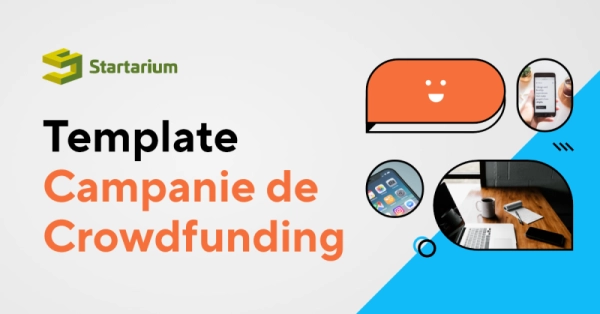The value of the first sales can be seen from several perspectives: in addition to the income they bring, they can be an opportunity to receive relevant feedback: both about the behavior of your customers and about the benefits that the product or service brings. Here's what you need to know about sales:

"Selling is very simple if you do it just like the customer wants to buy". For many people, selling is viewed in a negative light because it appears to be about manipulation – but, in reality, it is very much about empathy and relationship. In other words, their productivity is determined by the relationship you have built with the customer and the quality of the sales process.
Customer lifecycle
-
The process begins with the appearance of a need in the customer's life. Once they become aware of that need, they start looking for the solutions that exist to satisfy it.
-
After they are identified, they choose a few of them and start comparing the offers to make an informed decision.
-
Very often, when we say sales, we think strictly about the buying process and look at it transactionally, but it would be very interesting to see how we assist the customer throughout this process. Depending on the industry, the type of product or its novelty on the market, you can do it through marketing or directly, through sales people.
You can assist your customers through various marketing campaigns, where you generate their need or make them aware of the need, you differentiate yourself from the others and finally, they may end up buying; or you can do it through sales people, who assist the customer and help him realize the need, explain to him what the differences between different suppliers are and, finally, help the customer buy from the company they represent. All this mix is different and it is important for everyone to understand it and define it. What matters and how to stay close to your customer throughout the buying process.
-
The sales process does not always end with the purchase. Many sellers have the hit & run style and "run" towards the next sale the moment they finish another, while others manage to maximize the benefits of a buying customer and stay close.
They teach the customer how to use the product, how they can use it in a way that helps them further, they give them support in working with the product and thus manage to maintain the relationship and even be recommended to others. In this case, the customer becomes an ambassador for you and your brand and the cycle will start again with another referred customer.
Remember:
-
this customer lifecycle model is generic enough to cover all industries and markets - if necessary, it can be refined to better suit the specifics of the industry;
-
In the case of B2B2C (business to business to client) sales, we always have to end up having 2 cycles of this kind. Relationships with customers/partnerships are built in a cascade - a relationship with the distributor or with the partner who "resells" you, but at the same time you have to think about what happens to the end customer.
Company's inside sales culture - analysis and alignment
Before starting any sales-related activity, it's important to see what the company's internal culture is (Cătălin gave you the example of the Sales Scanner tool). Such an assessment shows the degree of alignment or strength of the current sales culture, measured by the level of congruence of the salespeople's opinions, beliefs, attitudes, and behaviors.
-
A strongly aligned culture can be an indicator of maturity: we think, feel and act the same based on beliefs and tested ways of acting, but it can also generate a high level of resistance to change.
-
A poorly aligned culture can indicate a potential for conflict fueled by the diverse perspectives and little agreement on what constitutes a good sales practice. On the other hand, a poorly aligned culture can generate constructive conflicts that lead to innovation and willingness to embrace change.
As a result of this testing, a report is produced which is divided into several areas/zones:
-
The health of the culture, which is very much about trust (the trust of the organization and the trust of the people in the organization), about integrity (how we approach the relationship with customers) and about how effectiveness is perceived.
-
The potential for growth, where we constantly want to do better. Continuous improvement/excellence mindset.
-
Myths - they pull us back. Most are about price ("only the lowest price sells"), customers, certain sales techniques you should or shouldn't use, etc.
-
Fears that can hold back or change the attitude of salespeople - related to what is happening on the market, the products and services you offer ("if I don't have a lot of confidence in the products I'm selling, I can convey that to the customer") or fears related to personal skills – what I know to do and how I do it as a sales person .
What comes after the analysis? Solution design
After the analysis we enter the actionable area. Sales productivity actually depends on the relationship level and the quality of the sales process.
Relationship level - there are several categories here:
-
Approved seller, where people know about me that I have good products/services;
-
Preferred supplier, where the consumer understands what my product is like and always comes back to me when they need a service/product like mine;
-
Consultant, when I understand the customer's needs very well, and they decide to come to me for advice on what to choose. This is about trust and integrity, especially when I know what a customer wants - if I can't give them something suitable, I recommend another solution, which is not necessarily another product of mine. The fact that the customer came to me first to ask is a big plus;
-
Contributor, where my customer needs to understand the market and what is going on and comes to me to help them with all this information;
-
Partner – the highest level, that is when the strategy is built together with the customer, which usually happens in a B2B relationship.
The sales process can be:
-
Random, where everyone sells as they think they should, which is very common in the case of new companies, when things are in the process of being organized;
-
Informal, a documented way, but only recommended;
-
Formal, documented and rigorously followed;
-
Dynamic, where the formal is continuously changing according to the market.
According to CSO Insights (Sales Performance of Optimization Study), the dynamic (or formal) sales process is the most suitable model, as it increases the company's performance.
The better the process is structured and the better the relationship is, we can talk about the performance/effectiveness of the sales process.
Sales funnel - a sales person or manager should focus first on generating leads, then on opportunity management and finally on the customer portfolio management.
The latter also has two objectives: Cross-Sell / Up-Sell and Referrals - more precisely how we take the relationship with the customers we already have and what new collaboration opportunities we can find, what other products/services we can sell them or what they can provide us, what leads they could bring us.
Prioritizing sales activities
According to the funnel, the prioritization should look like this:
-
Prospecting
-
Lead and Opportunity Qualification
-
Understanding needs, bidding and technical negotiation
-
Negotiating the terms of the contract and executing it
How does a sales person's day start?
They say that a day should actually start with the last step, the negotiation and execution of the contract, because at that point "the money is on the table", and we need to make sure that we secure that money before we do anything else.
On the other hand, you also have an energy boost when you feel you are closer to achieving your goals. Then comes prospecting – once you've been energized at the start of the day, you should never leave it until the end of the day, because you risk running out of time and energy for it.
For a lower stress level, it is also important to do the prospecting part not only when the terrain is more "arid", when you have no source of leads. The next steps are obvious: once you prospect, move on to lead and opportunity qualification, and then the need understanding, bidding and technical negotiation.
What a successful sales meeting looks like
7 behaviors have been identified that make the difference between a successful and an unsuccessful sales visit:
-
Needs investigation - getting to know the customer's needs, their life context and how my product/service can help them;
-
Checking understanding - making sure what I think I’ve heard is also real, it is what the customer actually said. In this case, I have to reformulate, rephrase, so as to make sure that the information I got is correct;
-
Solutions according to the customer's needs - being able to show how my solution covers some of the customer’s specific needs, without listing all the features of the product and everything it can do;
-
Dealing with objections - their appearance usually means that the customer misunderstood something at some point during the first steps and all misunderstandings need to be clarified;
-
Summarizing the discussion;
-
Commitment proposal - the commitment, the agreement that we are ready for the next steps;
-
Next steps.
Watch the webinar recording
On March 26, I made an overview of the things that help you when you want to make your first sales. They are very important not only for the profitability of your business, but also for the valuable feedback you can get from them (both in terms of the behavior of your customers and in terms of the benefits that your product or service brings).
About the speaker
Cătălin is a graduate of the Faculty of Mathematics of "Ovidius" University of Constanta and a Summa cum Laude graduate of the Romanian-Canadian MBA with a double specialization in Marketing and Finance.
He was involved in ambitious projects such as the launch and growth of the distribution channels for Zapp or the launch of American Express on the Romanian market.
After a professional career in telecommunications and banking, in areas such as project management, operational and sales, between 2012 and 2019 he coordinated all the retail distribution channels of ING Bank (direct sales, the network of 160 franchise locations, the internal contact center and the external call-centers) but also the Customer Experience and Innovation areas. All coordinated areas totaled more than 1,500 people and were recognized in many local and international events as some of the best performing customer interaction and sales channels.
In March 2019, he joined the Trend Consult team as leader of the Sales & Customer Experience practice where we propose an integrated approach of the 2 areas to build an experience that brings value to customers in every interaction and differentiates partner companies with which we work to increase their long-term sustainability.
Cătălin is also an active participant in social projects that have the potential to create a positive impact in society, being one of the initiators of projects such as Startarium.ro, CrestemIdei.ro or Asociația Națională a Vânzătorilor Profesioniști (National Association of Professional Sellers).























